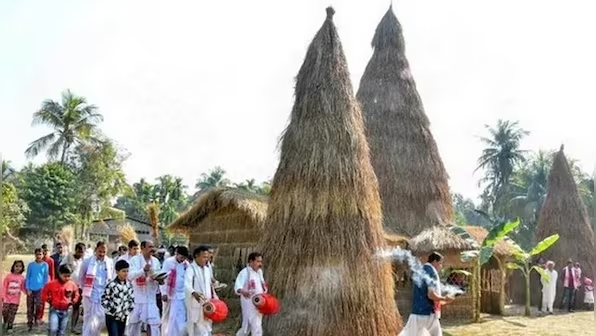Assam, a land blessed with rolling tea gardens, mighty rivers, and rich traditions, celebrates Bihu with unmatched enthusiasm and pride. Bihu is not just a festival; it is the soul of Assamese identity, symbolizing joy, unity, and gratitude towards nature. This vibrant celebration captures the spirit of Assam across all walks of life.
What is Bihu?
Bihu refers to a set of three different festivals celebrated in Assam — Rongali Bihu, Bhogali Bihu, and Kongali Bihu. Each marks a unique phase in the agricultural calendar and has its own special significance.
While Bhogali Bihu celebrates harvest, Rongali Bihu welcomes the Assamese New Year, and Kongali Bihu is associated with prayers for a good harvest during difficult times.
Rongali Bihu: The Festival of New Beginnings
Rongali Bihu, celebrated in mid-April, is the most vibrant and popular among the three. It coincides with the Assamese New Year and the arrival of spring. The festival is marked by traditional Bihu dances, melodious songs, and feasts. Young men and women dressed in colorful Mekhela Chadors and Dhoti-Gamosas gather in open fields to perform the famous Bihu dance, symbolizing youthfulness and joy.

Traditional instruments like the dhol (drum), pepa (hornpipe), and gagana (jaw harp) create a mesmerizing musical atmosphere. Rongali Bihu also involves visiting family and friends, exchanging sweets, and paying respect to elders.
Bhogali Bihu: A Festival of Feasting
Celebrated in mid-January, Bhogali Bihu (or Magh Bihu) marks the end of the harvest season. It is a time of abundance, when granaries are full, and communities come together to celebrate nature’s bounty.
One of the most exciting aspects of Bhogali Bihu is the construction of “Meji” — large structures made of wood, bamboo, and hay. On the morning of the festival, these Mejis are burned in a ritual known as “Meji burning,” symbolizing the offering of gratitude to the gods.

The night before, communities gather around makeshift huts called “Bhelaghar,” where they sing, dance, and enjoy traditional Assamese dishes like pitha (rice cakes), laru (sweet balls), and a variety of meat preparations.
Kongali Bihu: A Quiet Prayer
Unlike the other two, Kongali Bihu, observed in mid-October, is a quieter and more solemn festival. It comes at a time when fields are green but the barns are yet to be filled. During Kongali Bihu, lamps are lit in rice fields and around the house to seek blessings for a good harvest. It reflects the Assamese people’s deep connection with nature and their hopes for prosperity.

Cultural Significance of Bihu
Beyond its agricultural roots, Bihu holds a deep cultural and emotional significance for Assamese society. It transcends caste, creed, and religion, bringing people together in celebration. The Bihu dance and songs have even earned global recognition, with performances showcased internationally.
The vibrant Gamosa — a white cloth with red borders — plays an important role during Bihu. It is offered to elders as a mark of respect and is worn proudly during dances and ceremonies. The Gamosa has become a symbol of Assamese pride and identity.
Modern-Day Celebrations
While the essence of Bihu remains unchanged, modern celebrations have grown grander. Cultural programs, Bihu competitions, and exhibitions showcasing Assamese crafts, handlooms, and cuisine are now integral parts of the festival.
In cities and towns, Bihu committees organize community feasts and cultural nights, drawing thousands of participants. Meanwhile, Assamese diaspora across the world celebrate Bihu, keeping their traditions alive and introducing new generations to the beauty of their heritage.
Bihu, A Festival of Life
Bihu is more than just a festival for the people of Assam — it is a celebration of life itself. Rooted in the rhythms of nature, it brings together hope, hard work, gratitude, and joy. As the beats of the dhol echo through the fields and towns, Bihu continues to unite and inspire, passing on Assam’s timeless traditions from one generation to the next.
Also Read: NASA-ISRO’s NISAR Project Reaches Milestone with the Arrival of Radar Antenna Reflector at Bengaluru












